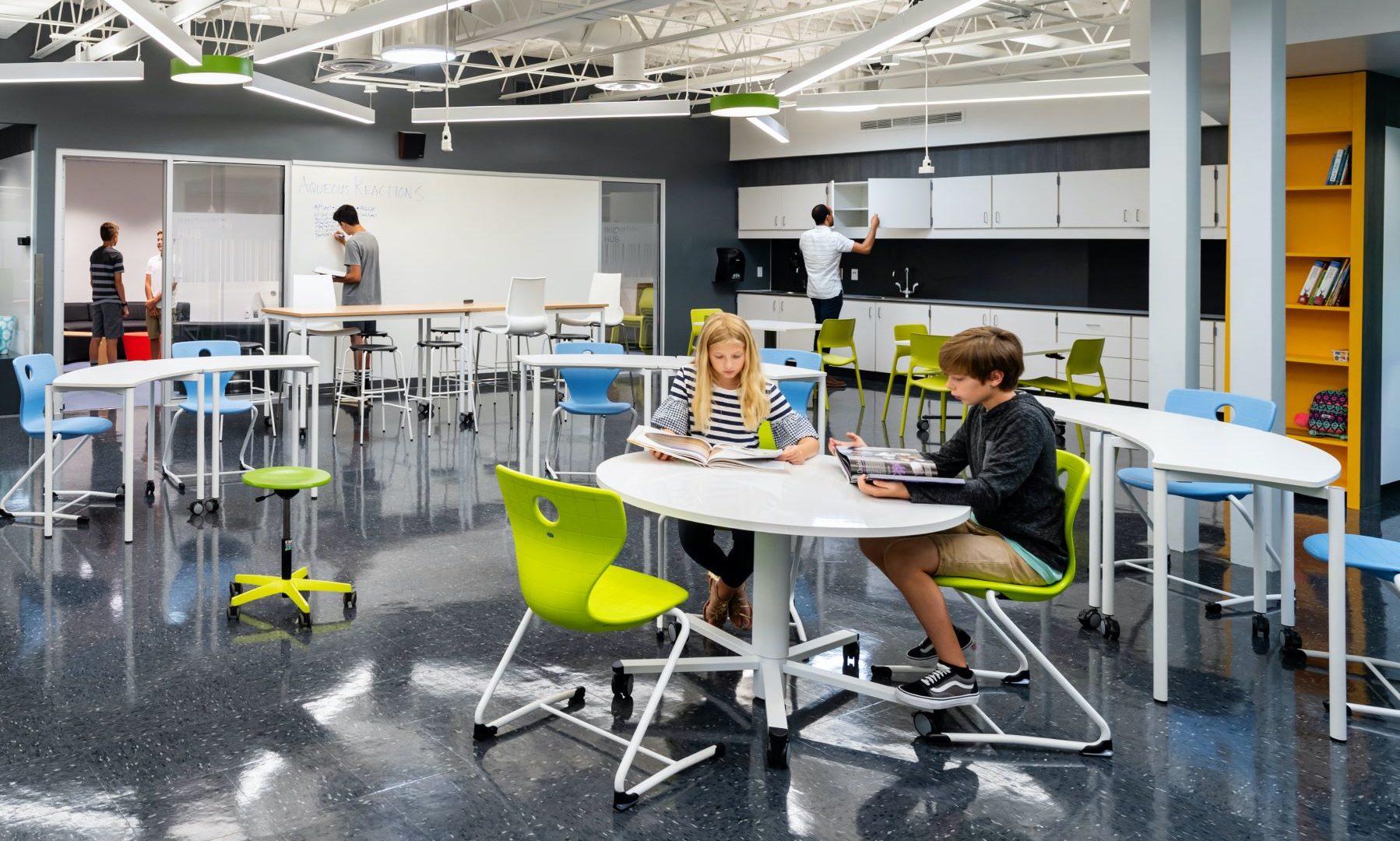By Dr. Dieter Breithecker
Learning, working, and living spaces have a long-term impact on our physical, mental, and social well-being. This underscores the important role spaces and furnishing play in meeting our basic physiological needs.
As humans, we come equipped with highly specialized sensory organs (like eyes and ears), and those which are located in the inner ear (sense of balance) and in the muscles, tendons, and joints (proprioceptive system). As “eyes” inside our bodies, they register every kind of motion. They also stimulate our cerebral activities.
The positive effects of the body’s sensory organs can, however, only be developed if they are regularly stimulated. Just as our eyes need daylight and our noses need fresh air, the sense of balance, along with muscle and movement sensors, needs regular posture changes and movement.
Children, in particular, whose physical and mental development processes are not yet complete, require more regular movement stimuli than adults. That’s how we can also explain the everyday image of a student tipping their chair back to balance it on two legs – their unconscious is ordering them to move in order to prevent emotional, mental, and physical disorganization.
Successful Learning Should Engage the Body, Mind, and Soul
We have long known about the health benefits of an active lifestyle. New studies confirm the positive influence of moderate – and most importantly, voluntary – movement on thinking. For example, scientists found that more physically active seniors achieved better cognitive outcomes than their “comfortable” counterparts.
In school, the principle of “active teaching” is a common term when it comes to promoting health, attention, and concentration performance, as well as learning success in everyday school life.
A study from Israel found that regular mobilizing behaviors, such as simple but regular postural changes that interrupt longer periods of immobility, have a positive effect on brain activity and activate cognitive resources that otherwise remain unused.
In addition, regular physical activity integrated into everyday life ensures a balanced sensory stimulation (activation of depth sensitivity, proprioceptive, and vestibular sensors) and thus uses an important counterpart for the brain to the otherwise very one-sided and stressful sensory stimulation (optical and acoustic overstimulation) caused by digital media. If the senses are in balance, the human is in balance. Evolution created brains for movement. If people sit too much, stay in one place, have everything available in their immediate environment, their complex system will be brought out of balance.
Key Elements for Healthy Learning Success and Innovation
There is an established relationship between physical activity, creativity, motivation, and cognition, which are key elements for sustainable learning success and innovation. Agile learning is a concept that was inspired by our research on collaborative and embodied learning in the classroom. It’s about inspiring people to break away from passive behaviors and get more physically, emotionally, and socially involved in the creative process. Static sitting leads to physical-mental deterioration and sabotages our ability to concentrate.
Regular physical activity directly affects cognitive processing areas of the brain, which, according to studies, helps the center for learning and memory (Hippocampus) – as well as our executive functions – participate. Executive functions are essentially processes that contribute to increasing the performance of:
- Our working memory, the ability to retain and process a certain amount of information
- Our flexible attention control, the ability to quickly and precisely switch focus between different requirements, or alternately observe and process different aspects of a task
A more physically stimulating environment demands and promotes an interactive interweaving of physical and mental processes. General well-being and above all intellectual work are the beneficiaries. French psychologist Jean Piaget was able to prove that a child’s sensorimotor skills are also the basis for their intellectual, social, and personal development.
A lack of vestibular-kinesthetic sensory experiences – the sensors that can only be activated by movement – can lead to posture and behavioral disorders, concentration deficits, speech, reading, or arithmetic weaknesses. Environments that allow for a range of postural changes and motion in general promote mental engagement.
Interior Design Influences Successful Learning
The trend is heading towards embodied interactive learning and teamwork, which can be supported by agile furniture and media technology.
A study at Rosenheim Technical University of Applied Sciences on learning environments of the future has shown that interior design directly influences the learning performance of students. Whether students feel comfortable, motivated, and can concentrate depends on the size, lighting conditions, acoustics, and atmosphere of the educational spaces.
The research also showed that in predominantly mobile positions, such as standing, students were far more likely to arrive at the correct answers and new ideas than while sitting down. If the room layout was adapted to the task, learning behavior and group work improved as did the decision-making process.
By working while carrying out different posture changes or while standing, creative and accurate decisions noticeably increased. An optimal learning environment meets the above requirements without disregarding the needs of the individual.
For this reason, it’s important to create spaces that can be individually personalized or adapted to group-specific tasks and do not force students into rigid work standards. We must provide students with tools that make them feel optimally supported in their work (ergonomic, mobile furniture): active seating with 3D rocking seats to support intuitive and need-based sitting behaviors, stools with flexible seating, sit-to-stand tables for individual workstations, standing tables for collaboration. Also important is lounge furniture with acoustic insulation as places for retreat, relaxation, or private conversations, as well as vertical surfaces supporting process-driven learning.
Equally vital is furniture that’s agile enough to be quickly reconfigured according to the lesson plan and that supports healthy posture. And seeing the massive shift schools have had to make due to the COVID-19 pandemic underscores the need for furniture that can be easily moved to create physically distant environments as necessary, as well as stacking of tables and chairs when not in use.
Creating Great Learning Opportunities
In the end, the learning environment is only a tool in the hand of teachers. It is what teachers do with those buildings that counts. But giving teachers the best tools to do their job as well as they possibly can is a vital first step towards creating great learning opportunities for all young people.
Dr. Dieter Breithecker is a health and kinetics scientist and the president of the Federal Institute on the Development of Posture and Movement in Germany. He works closely with VS America, an educational furniture manufacturer that provides adaptable and ergonomic furniture solutions that allow for the creation of agile learning environments, www.vsamerica.com.











